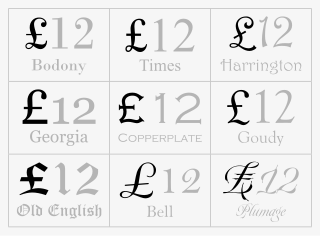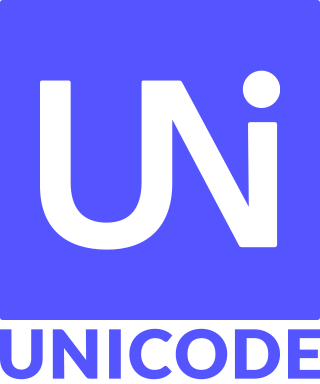
The Baudot code is an early character encoding for telegraphy invented by Émile Baudot in the 1870s. It was the predecessor to the International Telegraph Alphabet No. 2 (ITA2), the most common teleprinter code in use before ASCII. Each character in the alphabet is represented by a series of five bits, sent over a communication channel such as a telegraph wire or a radio signal by asynchronous serial communication. The symbol rate measurement is known as baud, and is derived from the same name.

Digital data, in information theory and information systems, is information represented as a string of discrete symbols, each of which can take on one of only a finite number of values from some alphabet, such as letters or digits. An example is a text document, which consists of a string of alphanumeric characters. The most common form of digital data in modern information systems is binary data, which is represented by a string of binary digits (bits) each of which can have one of two values, either 0 or 1.
Hexadecimal is a positional numeral system that represents numbers using a radix (base) of sixteen. Unlike the decimal system representing numbers using ten symbols, hexadecimal uses sixteen distinct symbols, most often the symbols "0"–"9" to represent values 0 to 9 and "A"–"F" to represent values from ten to fifteen.

The International Phonetic Alphabet (IPA) is an alphabetic system of phonetic notation based primarily on the Latin script. It was devised by the International Phonetic Association in the late 19th century as a standard written representation for the sounds of speech. The IPA is used by lexicographers, foreign language students and teachers, linguists, speech–language pathologists, singers, actors, constructed language creators, and translators.

A numeral system is a writing system for expressing numbers; that is, a mathematical notation for representing numbers of a given set, using digits or other symbols in a consistent manner.
Sutton SignWriting, or simply SignWriting, is a system of written sign languages. It is highly featural and visually iconic: the shapes of the characters are abstract pictures of the hands, face, and body; and their spatial arrangement on the page does not follow a sequential order, like the letters that make up written words. It was developed in 1974 by Valerie Sutton, a dancer who had, two years earlier, developed DanceWriting. Some newer standardized forms are known as the International Sign Writing Alphabet (ISWA).

The pound sign is the symbol for the pound unit of sterling – the currency of the United Kingdom and its associated Crown Dependencies and British Overseas Territories and previously of Great Britain and of the Kingdom of England. The same symbol is used for other currencies called pound, such as the Egyptian and Syrian pounds. The sign may be drawn with one or two bars depending on personal preference, but the Bank of England has used the one-bar style exclusively on banknotes since 1975.
Base32 is an encoding method based on the base-32 numeral system. It uses an alphabet of 32 digits, each of which represents a different combination of 5 bits (25). Since base32 is not very widely adopted, the question of notation—which characters to use to represent the 32 digits—is not as settled as in the case of more well-known numeral systems (such as hexadecimal), though RFCs and unofficial and de-facto standards exist. One way to represent Base32 numbers in human-readable form is using digits 0–9 followed by the twenty-two upper-case letters A–V. However, many other variations are used in different contexts. Historically, Baudot code could be considered a modified (stateful) base32 code.

ISO 6346 is an international standard covering the coding, identification and marking of intermodal (shipping) containers used within containerized intermodal freight transport by the International Organization for Standardization (ISO). The standard establishes a visual identification system for every container that includes a unique serial number, the owner, a country code, a size, type and equipment category as well as any operational marks. The register of container owners is managed by the International Container Bureau (BIC).
ISO 31-0 is the introductory part of international standard ISO 31 on quantities and units. It provides guidelines for using physical quantities, quantity and unit symbols, and coherent unit systems, especially the SI. It was intended for use in all fields of science and technology and is augmented by more specialized conventions defined in other parts of the ISO 31 standard. ISO 31-0 was withdrawn on 17 November 2009. It is superseded by ISO 80000-1. Other parts of ISO 31 have also been withdrawn and replaced by parts of ISO 80000.
Metadata, in the Common Language Infrastructure (CLI), refers to certain data structures embedded within the Common Intermediate Language (CIL) code that describes the high-level structure of the code. Metadata describes all classes and class members that are defined in the assembly, and the classes and class members that the current assembly will call from another assembly. The metadata for a method contains the complete description of the method, including the class, the return type and all of the method parameters.
The PANOSE System is a method for classifying typefaces solely on their visual characteristics, developed by Benjamin Bauermeister. It can be used to identify an unknown font from a sample image or to match a known font to its closest visual neighbor from a font pool. The word "PANOSE" is composed of letters taken from the six classes in which the creator of the system organized the Latin alphabet.

In computer science, the syntax of a computer language is the rules that define the combinations of symbols that are considered to be correctly structured statements or expressions in that language. This applies both to programming languages, where the document represents source code, and to markup languages, where the document represents data.
The Pan-Nigerian alphabet is a set of 33 Latin letters standardised by the National Language Centre of Nigeria in the 1980s. It is intended to be sufficient to write all the languages of Nigeria without using digraphs.

The Unicode Consortium and the ISO/IEC JTC 1/SC 2/WG 2 jointly collaborate on the list of the characters in the Universal Coded Character Set. The Universal Coded Character Set, most commonly called the Universal Character Set, is an international standard to map characters, discrete symbols used in natural language, mathematics, music, and other domains, to unique machine-readable data values. By creating this mapping, the UCS enables computer software vendors to interoperate, and transmit—interchange—UCS-encoded text strings from one to another. Because it is a universal map, it can be used to represent multiple languages at the same time. This avoids the confusion of using multiple legacy character encodings, which can result in the same sequence of codes having multiple interpretations depending on the character encoding in use, resulting in mojibake if the wrong one is chosen.

Unicode input is method to add a specific Unicode character to a computer file; it is a common way to input characters not directly supported by a physical keyboard. Characters can be entered either by selecting them from a display, by typing a certain sequence of keys on a physical keyboard, or by drawing the symbol by hand on touch-sensitive screen. In contrast to ASCII's 96 element character set, Unicode encodes hundreds of thousands of graphemes (characters) from almost all of the world's written languages and many other signs and symbols besides.

E.161 is an ITU-T Recommendation that defines the arrangement of digits, letters, and symbols on telephone keypads and rotary dials. It also defines the recommended mapping between the basic Latin alphabet and digits. Uses for this mapping include:
The Hamburg Sign Language Notation System (HamNoSys) is a transcription system for all sign languages. It has a direct correspondence between symbols and gesture aspects, such as hand location, shape and movement. It was developed in 1984 at the University of Hamburg, Germany. As of 2020, it is in its fourth revision.

Valerie Sutton is an American developer of movement notation and a former dancer.











